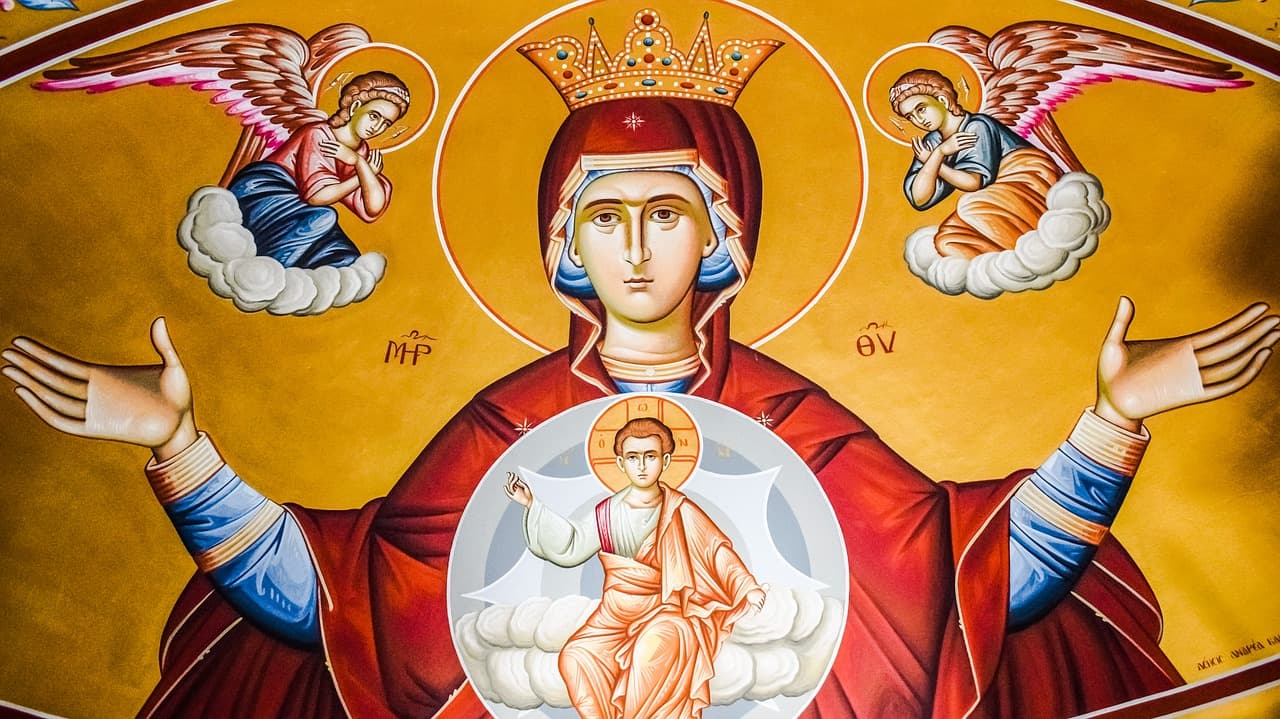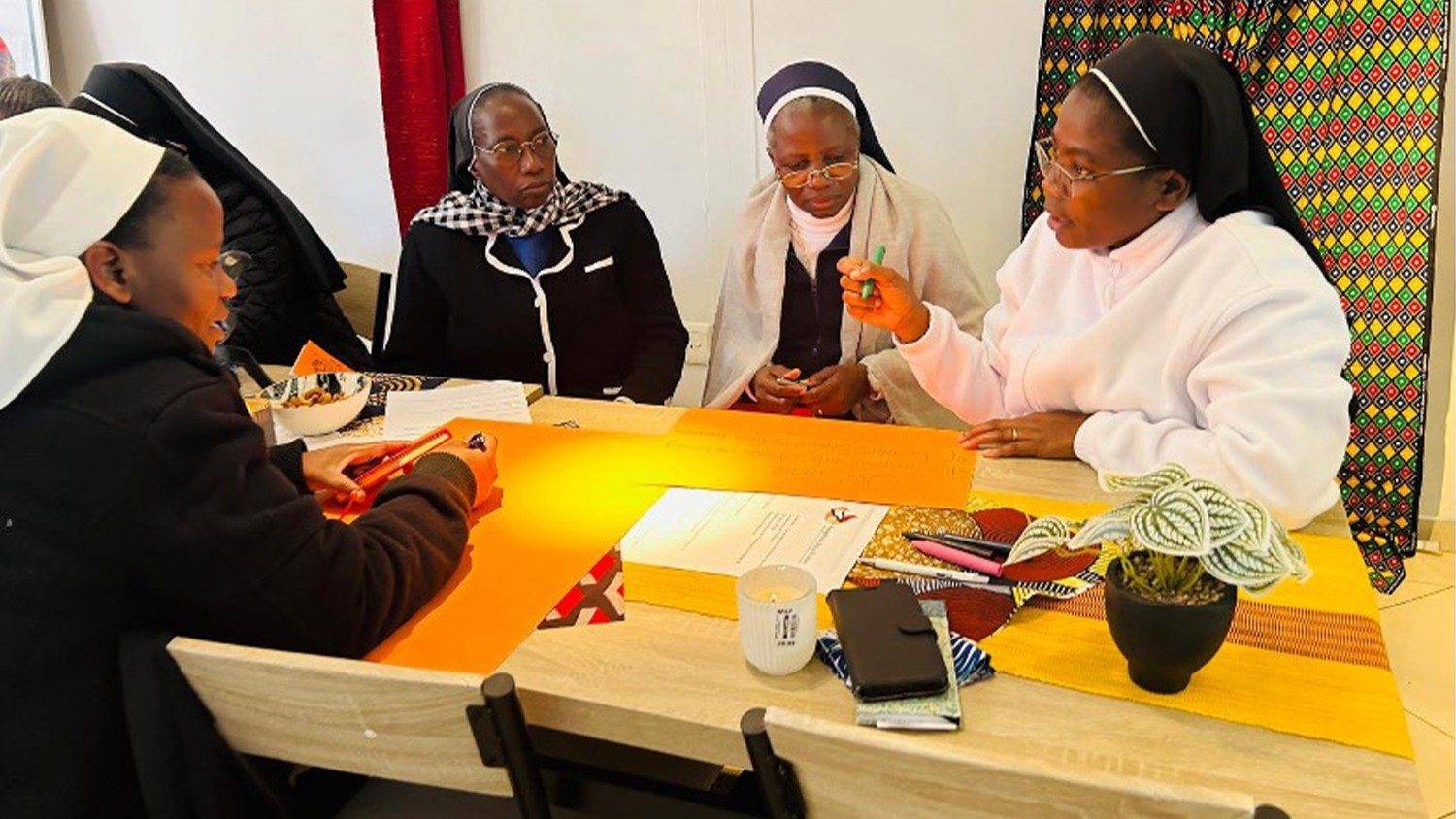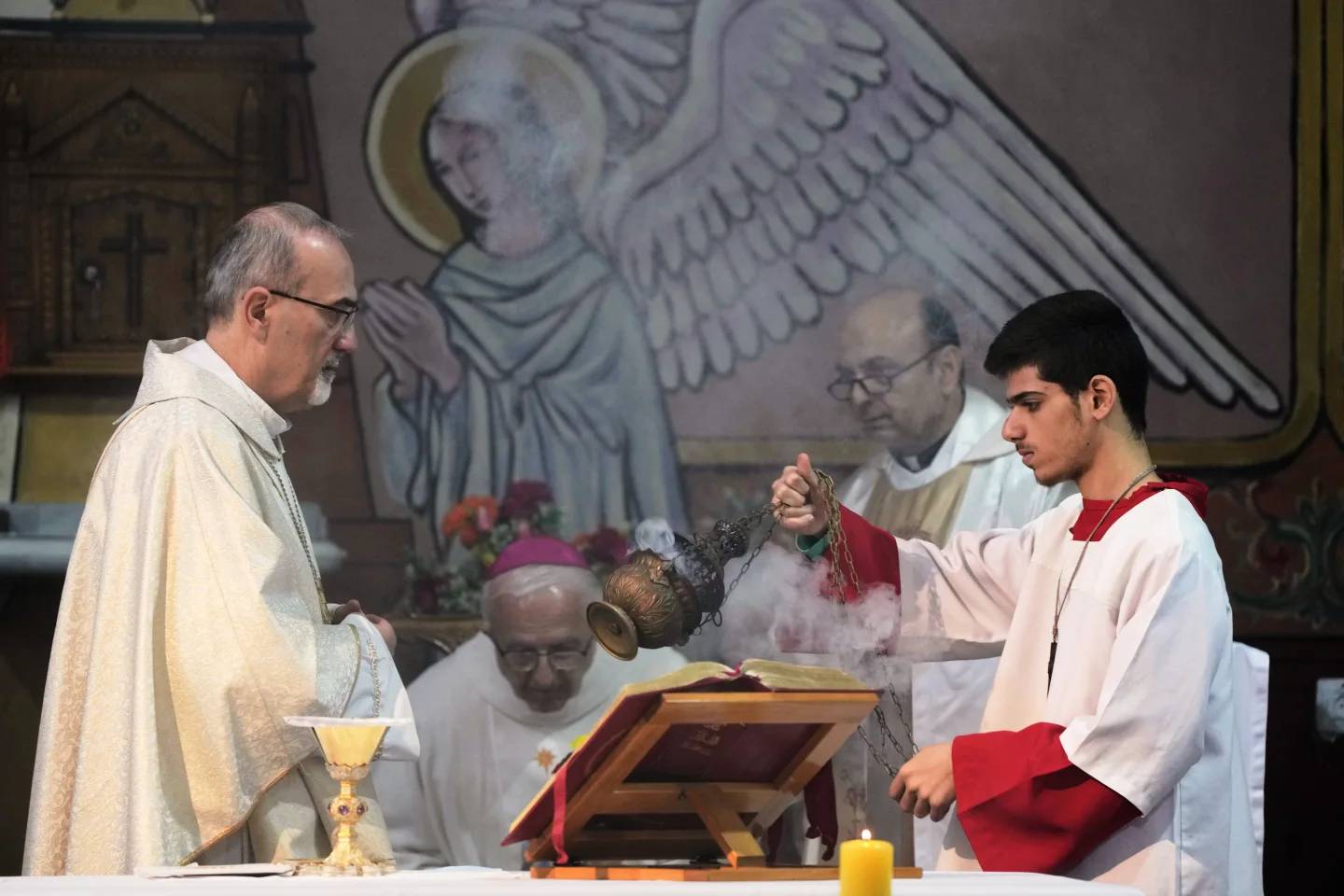[Editor’s Note: Kristin Marguerite Collier is an Assistant Professor of Internal Medicine at the University of Michigan Medical School where she practices general Internal Medicine. She serves as an Associate Program Director of the Internal Medicine Residency Program and is the Director of the Program’s Primary Care Track. In addition, she is the Director of the University of Michigan Medical School Program on Health, Spirituality and Religion. She spoke to Charles Camosy about Mary, Jesus, and pregnancy.]
Camosy: So here we are at the end of Advent, with Mary’s pregnancy with Jesus at the front of our minds. What’s the first thing which comes to your mind when you think about this?
Collier: The first thing that comes to my mind is love — that God so loved the world that he sent his only begotten son so that whoever believes in him should not perish but have eternal life. The fact that the creator of the universe chose a woman to bear his son to be our Savior is beautiful and awe-inspiring. Out of these emotions, flows a sense of gratitude and peace as I await with solemnity, during Advent, the birth and coming of our Lord Jesus Christ.
Obviously medical science is quite interested in studying and continuing to learn about pregnancy. What are some things that Crux readers might not know about the science behind the relationship between mother and prenatal child?
Through advances in prenatal imaging and the field of immunology, the truly wondrous miracle that is pregnancy is now being more fully understood. Two aspects of pregnancy that your readers might be interested in knowing more about relate to the placenta and something known as fetomaternal microchimerism.
As many of your readers may know, the placenta is the organ through which the mother and prenatal child interface. The placenta is an organ that is attached to the inside of the uterus and connects to the prenatal child through the child’s umbilical cord.
What is not as well known about this organ is that the placenta is the only organ in human biology that is made by two persons, together, in cooperation. The placenta is ‘built’ from tissue that is part from mom, and part from the growing baby. Because of this, the placenta is referred to as a ‘feto-maternal’ organ. It is the only organ made by two people, in cooperation with providence. It is the first time mom and her baby come together, albeit at the cellular level, to do something in cooperation.
Whenever I think of this, I picture the ceiling of the Sistine Chapel, where Michelangelo depicts God and Man reaching out for one another, hands about to touch and perhaps entwine. In the creation of the placenta, cells from the trophoblast, which are from the embryo, ‘reach down’ towards the mother’s uterine wall while at the same time, the spiral arteries from the mother’s uterus are ‘reaching’ up towards the embryo. This process leads to the creation of the placenta.
The placenta is the only purposely transient organ in humans and unlike the rest of our organs, acts as many organs in one. The placenta functions to eliminate waste, like the kidneys would do, facilitates transfer of oxygen and carbon dioxide, like the lungs would do, and provides nutrients, like a GI tract would do. It even has endocrine and immune function. What used to be discarded as just the ‘afterbirth’ is now regarded as a magnificently complex shared organ that supports the formation of the prenatal child.
The placenta is such an important organ that the National Institutes of Health (NIH) has established, under its “Eunice Kennedy Shriver National Institute of Child Health and Human Development” arm, the “Human Placenta Project” (HPP). The website says “The placenta is arguably one of the most important organs in the body. It influences not just the health of a woman and her fetus during pregnancy, but also the lifelong health of both mother and child.” The aim of the HPP is to better understand, through research, the amazing placenta with the ultimate goal of improving the health of children and mothers. The research done by the HPP continues to demonstrate that a child’s prenatal and postnatal health is inextricably linked to the health of the placenta.
In addition to the placenta, mother and prenatal child interact at a cellular level in something known as ‘fetomaternal microchimerism’. In Greek Mythology, the chimera is a fire breathing monster comprised of three species in one – a lion’s head, a goat’s body and a serpent’s tail. In science, “microchimerism” is the presence of a small population of genetically distinct and separately derived cells within an individual. During pregnancy, small numbers of cells traffic across the placenta. Some of the prenatal child’s cells cross into the mother, and some cells from the mother cross into the prenatal child. The cells from the prenatal child are pluripotent and integrate into tissues in her mother’s body and start functioning like the cells around them. This integration is known as ‘feto-maternal microchimerism’.
The presence of these cells is amazing for several reasons. One is that these cells have been found in various maternal organs and tissues such as the brain, the breast, the thyroid and the skin. These are all organs which in some way are important for the health of both the baby and her mother in relationship. The post-partum phase is when there is need, for example, for lactation. The fetomaternal microchimeric cells have been shown to be important in signaling lactation. These cells have been found in the skin, for example, in Cesarean section incisions where they are helping to produce collagen. Baby is helping mom heal after delivery by the presence of her cells! It would be one thing for these cells to come into the mother and be inert, but is a whole other thing entirely that these cells are active and aid mom for example in helping to produce milk for her baby and helping her heal. These cells may even affect how soon the mother can get pregnant again and therefore can affect spacing of future siblings.
Usually, foreign or ‘other’ cells are detected by the host immune system and are destroyed. The fact that these fetal cells ‘survive’ and then are allowed to integrate into maternal tissue speaks to a ‘cooperation’ between the mother and her child at the level of the cell that parallels that seen in the development of the placenta, suggesting that the physical connection between mom and baby is even deeper and more beautiful than previously thought. Research in fetomaternal microchimerism suggests that the presence of these cells may favorably affect the future risk of malignancy. The presence of these cells in the maternal breast may help protect mom from breast cancer years after the baby’s birth.
To think that a physical presence of the baby in her mother is helping protect her from cancer at the level of the cell, speaks to a radical mutuality at the cellular level that we are just beginning to understand. Some of the effects of fetomaternal microchimerism, however, may be detrimental in some cases. This research is still underway. The big takeaway is that the science of microchimerism supports the fact that some human beings carry remnants of other humans in their bodies. Thus, we aren’t the singular-autonomous individuals we think of ourselves as being.
This is astonishing! Why do you think these facts are not more widely known? Why aren’t pregnant women, or new mothers, informed of stuff like this?
I agree. It is truly astonishing. I’m not entirely clear why this type of information isn’t more widely known or made available in information given to women as they go through their pregnancy. I can only hypothesize on reasons why. In my opinion, pregnancy, like so many other ‘conditions’ experienced by people, has been purely ‘medicalized’ and distilled down to practical facts. Having had the blessing of four pregnancies myself, I remember the information that I was given. I received information about what I, as a pregnant woman, may experience regarding changes in my body or other common symptoms related to pregnancy, and was given a timeline with expected growth of the baby at each stage. I recall very little communication by the medical staff that spoke to wonder or awe in the process. I know that most women experience an immense sense of wonder and awe during their pregnancy that sometimes isn’t celebrated and discussed perhaps as much as it should be. The implicit message I fear women get sometimes is that billions of women before you and after you have and will become pregnant and this isn’t as special and amazing as you personally think it is. But yes it is! As Einstein said, you either believe everything in this life is a miracle or nothing is.
Let’s turn back to theology. Especially in light of Mary’s pregnancy with Jesus, what theological implications are there for these new things we are learning?
I am not a theologian, however, I think the existence of fetomaternal microchimerism speaks to an interconnectedness at the cellular level by God’s design. As I wrote about in a piece for Church Life Journal earlier this year, we see relationship at the heart of the Scriptures. We see that God, the maker of all things, is in a covenant bond with his people. We would be wrong to think that God, being the maker of all things, and being relational in his very nature, would not reveal in our biology a relational nature.
As a non-Catholic Christian, what implications does this medical science have, in your view, for Catholic veneration of Mary as Mother of God?
Jesus Christ redeemed every stage and aspect of our bodies through which he has passed. The Word became flesh in Mary’s uterus. Therefore, the uterus is a sacred space because it held our Lord and Savior. If we consider the biological reality of fetomaternal microchimerism, we can assume that some of Jesus’ cells transferred across the placenta in Mary’s womb into the Blessed Mother. What we could take from this is that even when Jesus physically left his mother, part of him remained in her and remains in her forever. This further magnifies her position as the glorious Theotokas.
I can also imagine that fetomaternal microchimerism can carry significant meaning not only for Catholic women, but for all women who have lost prenatal children or children after birth because we know that mothers have always thought, in some way, their children, even after death, were still with them. Now we see, through the lens of fetomaternal microchimerism, that they still are.
Crux is dedicated to smart, wired and independent reporting on the Vatican and worldwide Catholic Church. That kind of reporting doesn’t come cheap, and we need your support. You can help Crux by giving a small amount monthly, or with a onetime gift. Please remember, Crux is a for-profit organization, so contributions are not tax-deductible.

















